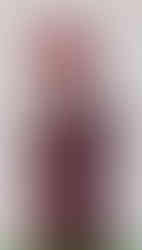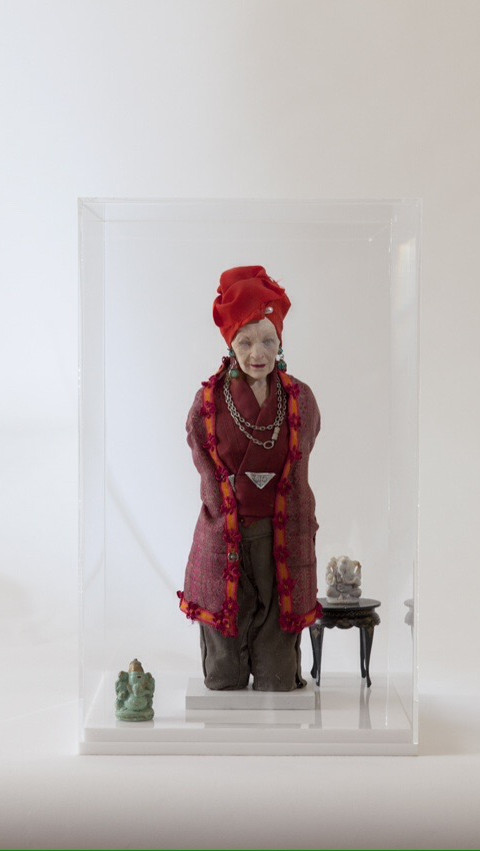A CANVAS NOT ON A WALL
- Riccardo Aimerito
- Mar 25, 2021
- 5 min read
My art is a work of synthesis, of subtraction and transcendency. That’s why those who come in contact with my work often get an “uneasy” kind of vibe from it; and I always find myself taken aback from it.
Talking with Francesco Merletti

I transcend reality in order to create a “new conversation” swayed by movements and face expressions, but also by the clothing and hairstyle choice as well as the decision of wearing makeup or not.
The titles of your work encapsulate actions and highlight connections with the theatre world. Are they more like reading keys or appeals for estrangement?
All the titles of my work came from suggestions, memories and musings… They are the beginning of a (mute) conversation or what’s left of it.
It is a mental process that I feel like I go through on a daily basis. When I meet a person, I establish a “contact” with him or her that goes way beyond the mere length of the conversation. Thinking and rethinking about what we talked about - or didn’t – I transcend reality in order to create a “new conversation” swayed by movements and face expressions, but also by the clothing and hairstyle choice, as well as the decision of wearing makeup or not.
I’m an obsessive observer!
My art is a work of synthesis, of subtraction and transcendency. That’s why those who come in contact with my work often get an “uneasy” kind of vibe from it; and I always find myself taken aback from it because it’s not my goal: I don’t want anybody to feel “estranged”. On the contrary, I count on the fact that the audience will get a glimpse of something that is already theirs from my pieces.

Who are your mentors or the ones to whom you owe this path?
My path has been unusual in some ways: becoming an artist wasn’t originally my idea… I can still recall how nauseous the smell of some rooms of the Biennale made me feel. I also have a vivid image of a childhood memory: it was an installation of black jute bags that gave off a very strong smell of damp and rotten jute.
Back then, I was very focused on fashion; during the ‘80s, that was the area where there was extreme creativity!
All that to say that I do not have strong pivotal points, my background is based on different models taken from art history (especially the Flamish and Manieristic one), fashion and, above all, cinema.
Perhaps, my generation is the last one that was able to benefit from state television, where Italian Neorealism and French movies, together with the great American classics, were broadcasted in technicolor, a chromatic choice I often use in my paintings. At that time, the scripts were based on “emotional” dynamics and a more existential dimension prevailed, while today they are characterised by more material, factual and concrete dynamics.
My characters are alive exclusively in an introspective, emotional dimension… They never look at the outside: their gaze is self-directed, as if they were looking at themselves in a mirror.
Your female characters are always surrounded by an aura of sacred unattainability, like they have the upper hand on a nature that surrenders silently; they are aware of being watched and reciprocate the gaze with cold indifference. Have you ever thought that they don’t belong on canvases hanged on walls?
My characters are alive exclusively in an introspective, emotional dimension… They never look at the outside: their gaze is self-directed, as if they were looking at themselves in a mirror.
How do you look at yourself in the mirror? It’s rarely an act of vanity; usually it’s the right moment to draw conclusions, to do a raw and truthful analysis of who we are, the moment in which we have a lucid conversation with ourselves. After all this, we carefully build with expertise the personality we want (or have) to play and we are ready to go on stage.
So, back to your question, the answer is yes, there is sacredness: it’s more like a liturgy, an act of pain or a communion from all points of view.

How do you see yourself dialoguing with your audience? And what is your ideal audience?
I don’t know, I’ve never thought about it.
What is your relationship with critics?
Tough question. I’ve never had a “spontaneous” critical piece. Generally, I like it when a critic can read the image and draw his or her own conclusions and I accept it if the conclusion is far from my original idea or if he or she didn’t grasp some essential aspects, it’s okay. I absolutely hate it when criticism is done by default, it's desirable that the critics get to meet the artist, but in the end, the outcome must be drawn independently and spontaneously, regardless of that.
One thing I’m very proud of are the constant bursts of esteem I get from other artists who write beautiful and spontaneous critical reviews about me. It’s a very rare thing in our world, since being an artist inevitably leads to being extremely self-referential and not prone to great displays of esteem (if not out of courtesy) towards fellow artists…
In your set of sculptures "Settanta Denari" (Seventy Denier), miniatures of old women are caught in default during their daily intimacy and in the raw process of physical disintegration. It looks like they are trying to show themselves as to reveal a secret. What scares you the most, what is your worst nightmare?
Why would you want to pause everything because of death?
Dying!
The old women in “Settanta Denari” are not in default! In fact, they are absolutely free, well-groomed, elderly ladies: they have reached a new dimension outside the box in which the female role is trapped, and their only concern is to please themselves.
When this set of sculptures was conceived, I was going through a rough period in my life. I was teaching yoga to elderly ladies, they were always taken care of and ready to organize trips (of course we are talking about wealthy ladies). Thinking about them now, I realize I almost envy their life; sure, sometimes one of them would “disappear”, another would become a widow, but two weeks later they were back on their feet at the yoga center ready to start again…Why would you want to pause everything because of death?
Can you explain why you chose to switch to collage and, more specifically, that idea you mentioned about breaking the boundaries of the images?
For me, transitioning from a technique to another (painting, collage or sculpture) is simply a change of instrument. In my work, a common aesthetical and conceptual thread formally persists.
More in detail, the shift from painting to collage came from the need for synthesis, already existing in my paintings. The subject is deliberately isolated in order to focus the attention on the face, that gains volume. Everything else is two-dimensional, the bodies almost look like silhouettes and the subjects are immersed in a monochrome background.


The art world has very peculiar rules (a sort of etiquette) that are very difficult to break away from.
What was and still is the importance of keeping good relationships with gallery owners and main galleries?
I come from a long and exclusive collaboration with an art gallery, which made me feel protected as an artist. However, this collaboration ended abruptly and I found it hard to start a new collaboration with another gallery. The art world has very peculiar rules (a sort of etiquette) that are very difficult to break away from.
Every artist has his own path! I belong to a generation of artists in which galleries, curators, collectors and critics were extremely important, especially for “niche” artists like me who have a very restricted financial resources.
Do you have any regrets?
No! What I have done or haven’t done has always been on me, on my talent and shy nature.

Interview and Article by
DM
Images sourced from












Comments